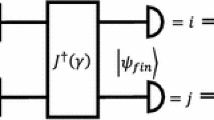Abstract
Military operations, particularly in the littorals, have been contested and challenging. It is imperative to develop tools and methods to help tactical units execute distributed operations. Distributed, collaborative and networked agents have been associated with peer-to-peer models. The military operation applications require each tactical unit to prioritize requests, recommend content and services to balance the load of a whole peer-to-peer network without the total knowledge and communication with the whole network, therefore, effectively reduce the operation signatures of individual agents and avoid the detection by the adversaries. This objective can not be achieved using the traditional collaborative filters or distributed bandit algorithms. We show innovative collaborative learning agents (CLAs) applied to distributed operations. In a distributed operation, each unit or node is represented as a single CLA. A unit can be a knowledge supplier (e.g., capability or service), or knowledge consumer (e.g., a demand or request from its peer units or environment). When a unit receives a new request, it searches its peer network for the best match to fulfil the request, meanwhile the whole network constantly self-organizes and balances the word load of the nodes, lowers the signatures, and avoids detection. By employing CLAs, we first map the need of lowering operation signatures to a load-balancing problem, then apply lexical link analysis (LLA) and principle of quantum entanglement and superposition into a framework of LLA quantum intelligence game (LLAQIG). LLAQIG optimizes the value of an agent itself and in the same time helps a peer network achieve the Nash equilibrium and attain the optimal total social welfare. We show a use case and data set for distributed transportation units to handle transportation movement requests. We demonstrate that the resulted newly formed peer groups using LLAQIG, which have the characteristics of smaller load mean range between peer groups, lower load standard deviation within groups, higher number of unique equipment utilized than other methods and random configurations. These discovered metrics indicate new peer groups are less likely to be detected with less movement of units within peer groups, therefore maintaining lower operation signatures. The military tactical units can potentially leverage the results for flexible command and control (C2), organizational structures, and modernization. A peer-to-peer military distributed operation equipped with CLAs allow units, with traditional warfare capabilities of sensors, platforms, networks, weapons, and emerging technologies, optimize their value or load in an autonomous and self-organizing fashion with smaller footprint.
Access this chapter
Tax calculation will be finalised at checkout
Purchases are for personal use only
Similar content being viewed by others
References
Priebe, M., Vick, A.J., Heim, J.L., Smith, M.L.: Distributed operations in a contested environment: implications for USAF Force Pres entation, Santa Monica, Calif.: RAND Corporation, RR-2959-AF (2019). As of 06 October 2021. http://www.rand.org/pubs/research_reports/RR2959.html
Lundquist, E. (2021). http://seapowermagazine.org/dmo-is-navys-operational-approach-to-winning-the-high-end-fight-at-sea/http://www.afspc.af.mil/Portals/3/documents/Schreiver
Navy Warfare Development Command. CNO Visits Navy Warfare Development Command (2017). http://www.nwdc.usff.navy.mil/Press-Room/News-Stories/Article/2406186/cno-visits-navy-warfare-development-command/
Colpo, D.: PMW 150 Portfolio (2016). http://www.ndia-sd.org/wpcontent/uploads/2017/02/2.PMW
Babaoglu, O., et al.: Design patterns from biology for distributed computing. ACM Trans. Auton. Adapt. Syst. 1(1), 26–66 (2006)
Kairouzet, A.: Advances and open problems in federated learning. arXiv:1912.04977 (2019)
Vanhaesebrouck, P., Bellet, A., Tommasi, M.: Decentralized Collaborative Learning of Personalized Models over Networks (2017)
Savazzi, S, Nicoli, M., Rampa, V.: Federated learning with cooperating devices: a consensus approach for massive IoT networks. IEEE Internet Things J. 7(5), 4641–4654. arXiv:1912.13163 (2020). https://doi.org/10.1109/JIOT.2020.2964162
Li, S., Karatzoglou, A., Gentile, C.: Collaborative filtering bandits. In: The 39th SIGIR (SIGIR 2016) (2016). http://doi.org/10.48550/arXiv.1502.03473
Mahadik, K., Wu, Q., Li, S., Sabne, A.: Fast distributed bandits for online recommendation systems. In: ICS 2020: Proceedings of the 34th ACM International Conference on Supercomputing June 2020 Article No. 4, pp. 1–13 (2020). http://doi.org/10.1145/3392717.3392748
Korda, N., Szorenyi, B., Li, S.: Distributed clustering of linear bandits in peer to peer Networks. In: the 33rd ICML 2016 (2016). http://arxiv.org/abs/1604.07706
Zhou, C., Zhao, Y., Kotak, C.: The Collaborative Learning agent (CLA) in Trident Warrior 08 exercise. In: Proceedings of the International Conference on Knowledge Discovery and Information Retrieval - Volume 1: KDIR, IC3K, Madeira, Portugal, pp. 323–328 (2009). https://doi.org/10.5220/0002332903230328
Zhao, Y., Zhou, C.C.: Collaborative Learning Agents (CLA) for swarm intelligence and applications to health monitoring of system of systems. In: Rodrigues, J.M.F., Cardoso, P.J.S., Monteiro, J., Lam, R., Krzhizhanovskaya, V.V., Lees, M.H., Dongarra, J.J., Sloot, P.M.A. (eds.) ICCS 2019. LNCS, vol. 11538, pp. 706–718. Springer, Cham (2019). https://doi.org/10.1007/978-3-030-22744-9_55
Buford, J., Yu, H.: Peer-to-peer networking and applications: synopsis and research directions. In: Shen, X., Yu, H., Buford, J., Akon, M. (eds.) Handbook of Peer-to-Peer Networking, pp. 3–45. Springer, Boston (2010). https://doi.org/10.1007/978-0-387-09751-0_1
Blei, D., Ng, A., Jordan, M.: Latent Dirichlet allocation. J. Mach. Learn. Res. 3, 993–1022 (2003). http://jmlr.csail.mit.edu/papers/volume3/blei03a/blei03a.pdf
Penn State University (PSU). Online Statistics: Normal Approximation Method Formulas (2021). http://online.stat.psu.edu/stat200/lesson/9/9.1/9.1.2/9.1.2.1
Sun, Z.W.: The rule for evolution of cooperation in quantum games. Acta Physica Polonica A. 116(2), 135–140 (2009)
Newman, M.E.J.: Finding community structure in networks using the eigenvectors of matrices. Phys. Rev. E 74, 036104 (2006)
Jackson, M., Zenou Y.: Games on networks (2014). http://web.stanford.edu/~jacksonm/GamesNetworks.pdf
Acknowledgment
Authors would like to thank the Naval Postgraduate School (NPS)’s Naval Research Program (NRP) for supporting the research. The Office of Naval Research (ONR) and the SBIR contract N00014-07-M-0071 supported the partial research of Collaborative Learning Agents at Quantum Intelligence, Inc. The views and conclusions contained in this document are those of the authors and should not be interpreted as representing the official policies, either expressed or implied of the U.S. Government.
Author information
Authors and Affiliations
Corresponding author
Editor information
Editors and Affiliations
Rights and permissions
Copyright information
© 2023 The Author(s), under exclusive license to Springer Nature Switzerland AG
About this paper
Cite this paper
Zhao, Y., Mata, G., Zhou, C. (2023). Self-organizing and Load-Balancing via Quantum Intelligence Game for Peer-to-Peer Collaborative Learning Agents and Flexible Organizational Structures. In: Arai, K. (eds) Intelligent Computing. SAI 2023. Lecture Notes in Networks and Systems, vol 711. Springer, Cham. https://doi.org/10.1007/978-3-031-37717-4_33
Download citation
DOI: https://doi.org/10.1007/978-3-031-37717-4_33
Published:
Publisher Name: Springer, Cham
Print ISBN: 978-3-031-37716-7
Online ISBN: 978-3-031-37717-4
eBook Packages: Intelligent Technologies and RoboticsIntelligent Technologies and Robotics (R0)




